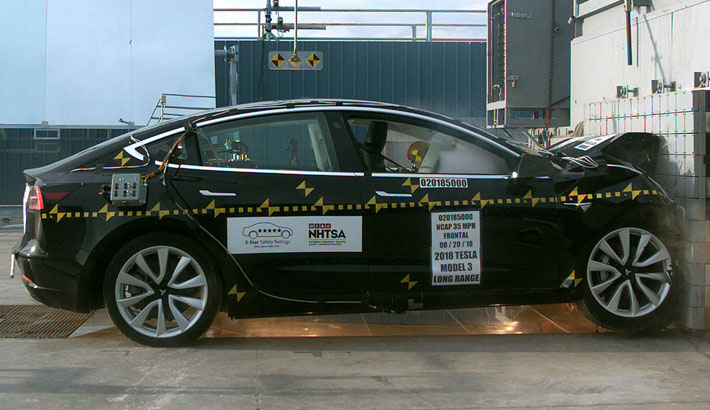
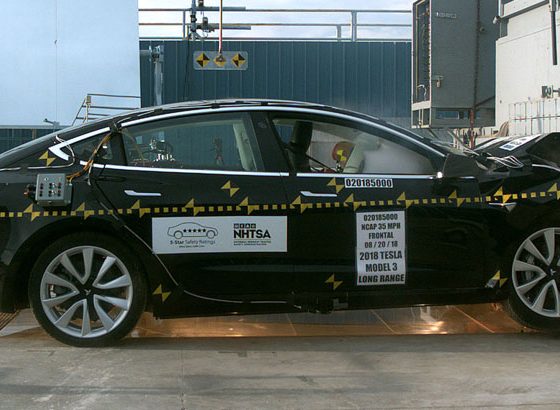
Investor's Corner
Tesla’s Model 3 safety claims and the NHTSA’s scrutiny: A look at an old (revived) story
Multiple reports have recently emerged about the US National Highway Traffic Administration scrutinizing Tesla and the company’s claims that the Model 3 has the lowest probability of injury among vehicles tested by the agency. It should be noted that the NHTSA’s scrutiny, which involved a cease-and-desist letter to Tesla and a prompt response from the automaker, transpired last October, following the agency’s release of the Model 3’s 5-Star Safety Rating.
The NHTSA’s reaction to Tesla recently came to fore due to documents shared by staunch TSLA critic and transparency group Plainsite, which was able to access both the NHTSA’s cease-and-desist letter to Tesla as well as the electric car maker’s response to the agency thanks to a Freedom of Information Act request. What’s quite peculiar about the new string of reports, including those from Bloomberg and Reuters, is that they highlight the NHTSA’s allegations about the company’s alleged misleading claims about the Model 3, but not Tesla’s response arguing that it used the agency’s own data to arrive at its conclusions.
To get an accurate picture of this story, one must look at the full cease-and-desist letter sent by the NHTSA to Tesla, as well as the entire contents of the electric car maker’s response. A copy of each letter will be embedded in this article, to provide a full account of the two parties’ correspondence.
Following Tesla’s release of its blog post stating that the Model 3 has the lowest probability of injury among the vehicles tested by the NHTSA, the agency sent the Silicon Valley-based company a cease-and-desist letter. Addressed to Elon Musk, the letter claimed that Tesla had “issued a number of misleading statements regarding the recent Government 5-Star Ratings of the Tesla Model 3.” NHTSA Chief Counsel Jonathan Morrison, who sent the letter, further argued that statements such as “lowest probability of injury in all cars” are inaccurate and not in the best interests of consumers.
The NHSTA’s cease-and-desist letter to Tesla could be accessed below.
Tesla Model 3 Safety Claims… by Simon Alvarez on Scribd
Tesla disagreed with the NHTSA’s allegations in its response to the cease-and-desist letter. The electric car maker argued that its statements about the Model 3’s safety were neither untrue nor misleading, especially since the company used the NHTSA’s own data (which could be accessed here) when it stated that the electric sedan, as well as its largest siblings, the Model S and Model X, have the lowest probability of injury among vehicles tested by the agency. Tesla also noted that the Model 3’s achievement is “exactly what NHTSA intended with the NCAP — to encourage manufacturers to continuously immprove safety.” With this in mind, Tesla noted that there was no reason to discontinue its blog post highlighting the Model 3’s safety.
Tesla’s full response to the NHTSA could be read below.
Tesla Model 3 Safety Claims… by Simon Alvarez on Scribd
It should be noted that the NHTSA has not doubled down on its allgetations against Tesla’s statements about the Model 3. The electric car maker’s blog post explaining the Model 3’s stellar safety scores is still active today. Contrary to Plainsite’s statements that Tesla was “referred to the FTC for repeatedly lying about the safety of their vehicles,” it appears that the NHTSA opted to back down from its allegations once the electric car maker explained the rationale behind its statements about the Model 3.
The Model 3 has since gained perfect 5-Star Safety Ratings from the Euro-NCAP and the ANCAP, with both safety agencies lauding the vehicle for being one of the safest cars on the road. Following the vehicle’s crash tests, Matthew Avery, head of research at Thatcham Research, which conducts the crash tests with the Euro NCAP, noted that “Tesla has done a great job of playing the structural benefits of an electric vehicle to its advantage. The Tesla Model 3 achieved one of the highest Safety Assist scores we have seen to date.” These sentiments were echoed by ANCAP Chief Executive Officer James Goodwin, who noted that it was “great to see electric vehicles continuing to prioritize safety. It is encouraging to see Tesla give equal attention to the active safety systems and technologies on board as well as the safety fundamentals through the structure and restraints.”
H/T to Vladimir Grinshpun.

Investor's Corner
Tesla stock closes at all-time high on heels of Robotaxi progress
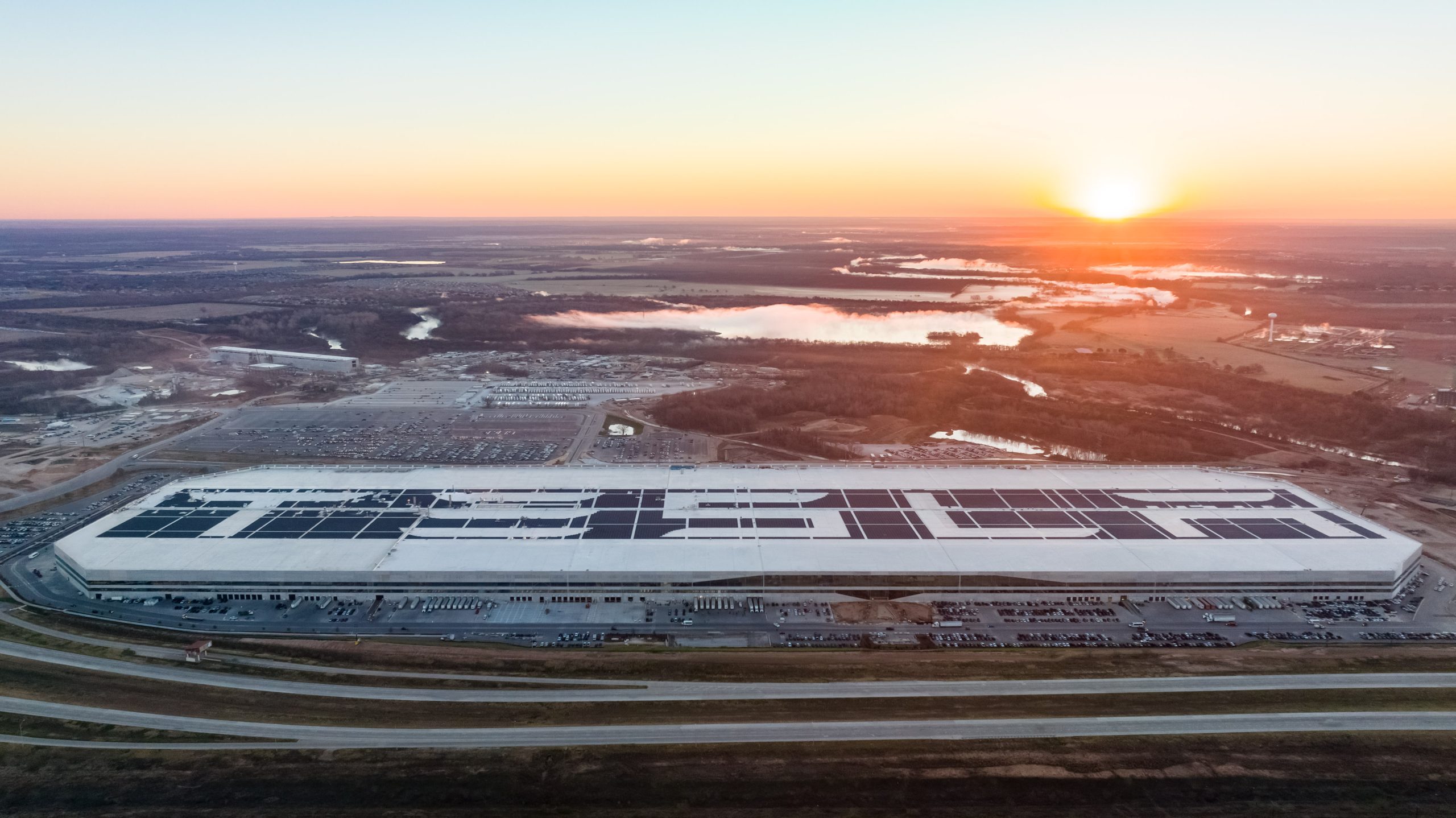
Tesla stock (NASDAQ: TSLA) closed at an all-time high on Tuesday, jumping over 3 percent during the day and finishing at $489.88.
The price beats the previous record close, which was $479.86.
Shares have had a crazy year, dipping more than 40 percent from the start of the year. The stock then started to recover once again around late April, when its price started to climb back up from the low $200 level.
This week, Tesla started to climb toward its highest levels ever, as it was revealed on Sunday that the company was testing driverless Robotaxis in Austin. The spike in value pushed the company’s valuation to $1.63 trillion.
Tesla Robotaxi goes driverless as Musk confirms Safety Monitor removal testing
It is the seventh-most valuable company on the market currently, trailing Nvidia, Apple, Alphabet (Google), Microsoft, Amazon, and Meta.
Shares closed up $14.57 today, up over 3 percent.
The stock has gone through a lot this year, as previously mentioned. Shares tumbled in Q1 due to CEO Elon Musk’s involvement with the Department of Government Efficiency (DOGE), which pulled his attention away from his companies and left a major overhang on their valuations.
However, things started to rebound halfway through the year, and as the government started to phase out the $7,500 tax credit, demand spiked as consumers tried to take advantage of it.
Q3 deliveries were the highest in company history, and Tesla responded to the loss of the tax credit with the launch of the Model 3 and Model Y Standard.
Additionally, analysts have announced high expectations this week for the company on Wall Street as Robotaxi continues to be the focus. With autonomy within Tesla’s sights, things are moving in the direction of Robotaxi being a major catalyst for growth on the Street in the coming year.
Elon Musk
Tesla needs to come through on this one Robotaxi metric, analyst says
“We think the key focus from here will be how fast Tesla can scale driverless operations (including if Tesla’s approach to software/hardware allows it to scale significantly faster than competitors, as the company has argued), and on profitability.”
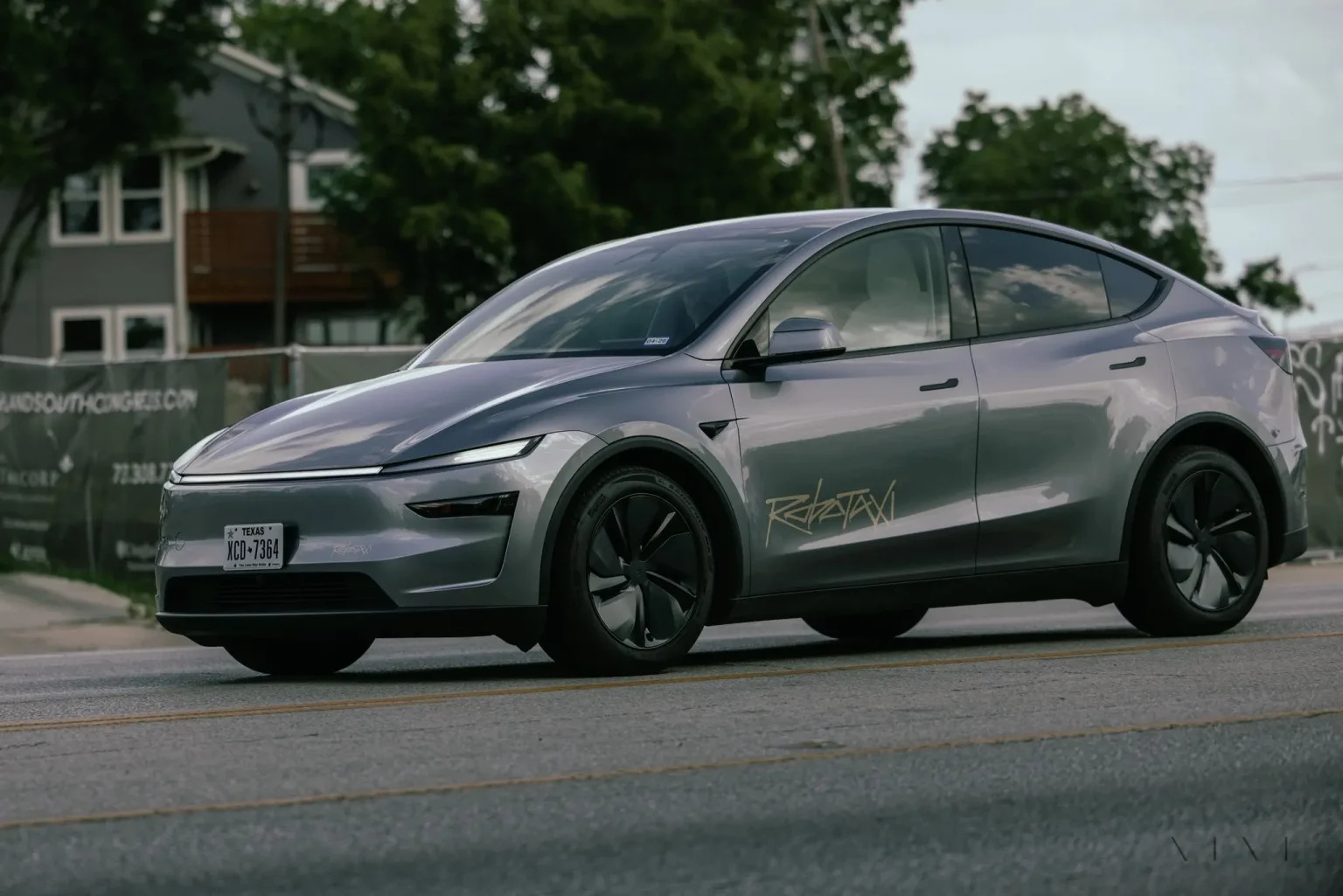
Tesla needs to come through on this one Robotaxi metric, Mark Delaney of Goldman Sachs says.
Tesla is in the process of rolling out its Robotaxi platform to areas outside of Austin and the California Bay Area. It has plans to launch in five additional cities, including Houston, Dallas, Miami, Las Vegas, and Phoenix.
However, the company’s expansion is not what the focus needs to be, according to Delaney. It’s the speed of deployment.
The analyst said:
“We think the key focus from here will be how fast Tesla can scale driverless operations (including if Tesla’s approach to software/hardware allows it to scale significantly faster than competitors, as the company has argued), and on profitability.”
Profitability will come as the Robotaxi fleet expands. Making that money will be dependent on when Tesla can initiate rides in more areas, giving more customers access to the program.
There are some additional things that the company needs to make happen ahead of the major Robotaxi expansion, one of those things is launching driverless rides in Austin, the first city in which it launched the program.
This week, Tesla started testing driverless Robotaxi rides in Austin, as two different Model Y units were spotted with no occupants, a huge step in the company’s plans for the ride-sharing platform.
Tesla Robotaxi goes driverless as Musk confirms Safety Monitor removal testing
CEO Elon Musk has been hoping to remove Safety Monitors from Robotaxis in Austin for several months, first mentioning the plan to have them out by the end of 2025 in September. He confirmed on Sunday that Tesla had officially removed vehicle occupants and started testing truly unsupervised rides.
Although Safety Monitors in Austin have been sitting in the passenger’s seat, they have still had the ability to override things in case of an emergency. After all, the ultimate goal was safety and avoiding any accidents or injuries.
Goldman Sachs reiterated its ‘Neutral’ rating and its $400 price target. Delaney said, “Tesla is making progress with its autonomous technology,” and recent developments make it evident that this is true.
Investor's Corner
Tesla gets bold Robotaxi prediction from Wall Street firm
Last week, Andrew Percoco took over Tesla analysis for Morgan Stanley from Adam Jonas, who covered the stock for years. Percoco seems to be less optimistic and bullish on Tesla shares, while still being fair and balanced in his analysis.
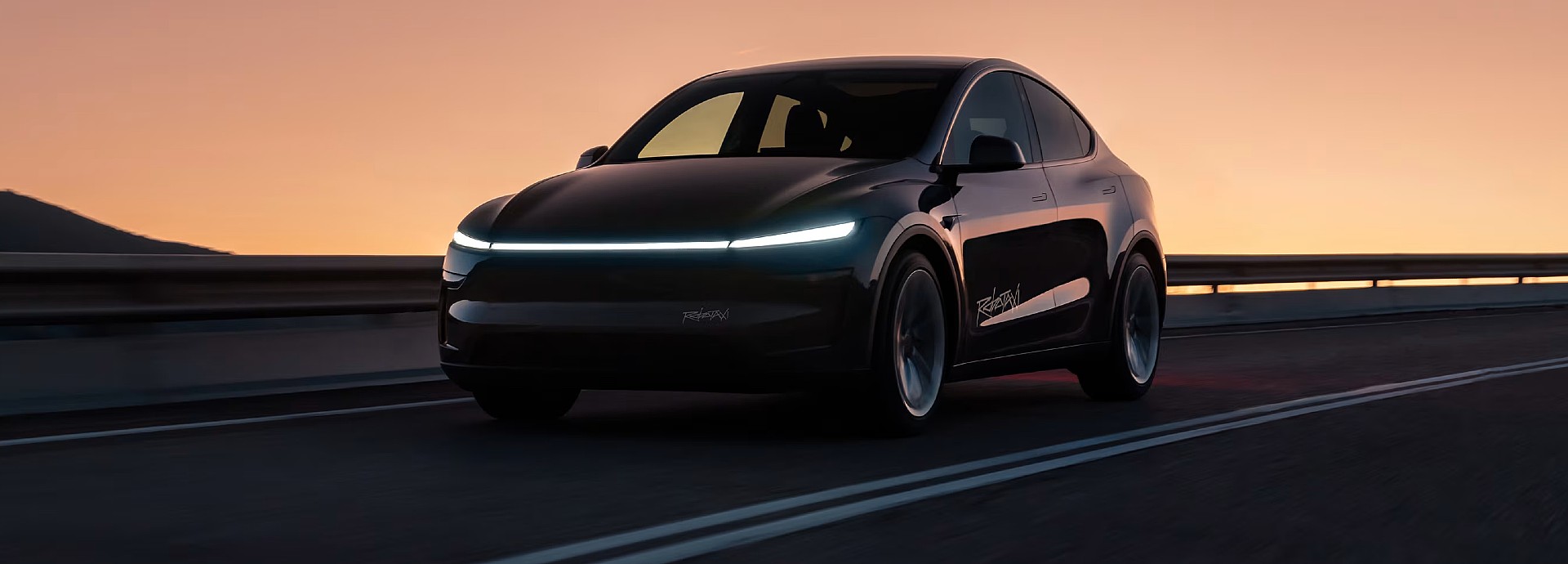
Tesla (NASDAQ: TSLA) received a bold Robotaxi prediction from Morgan Stanley, which anticipates a dramatic increase in the size of the company’s autonomous ride-hailing suite in the coming years.
Last week, Andrew Percoco took over Tesla analysis for Morgan Stanley from Adam Jonas, who covered the stock for years. Percoco seems to be less optimistic and bullish on Tesla shares, while still being fair and balanced in his analysis.
Percoco dug into the Robotaxi fleet and its expansion in the coming years in his latest note, released on Tuesday. The firm expects Tesla to increase the Robotaxi fleet size to 1,000 vehicles in 2026. However, that’s small-scale compared to what they expect from Tesla in a decade.
Tesla expands Robotaxi app access once again, this time on a global scale
By 2035, Morgan Stanley believes there will be one million Robotaxis on the road across multiple cities, a major jump and a considerable fleet size. We assume this means the fleet of vehicles Tesla will operate internally, and not including passenger-owned vehicles that could be added through software updates.
He also listed three specific catalysts that investors should pay attention to, as these will represent the company being on track to achieve its Robotaxi dreams:
- Opening Robotaxi to the public without a Safety Monitor. Timing is unclear, but it appears that Tesla is getting closer by the day.
- Improvement in safety metrics without the Safety Monitor. Tesla’s ability to improve its safety metrics as it scales miles driven without the Safety Monitor is imperative as it looks to scale in new states and cities in 2026.
- Cybercab start of production, targeted for April 2026. Tesla’s Cybercab is a purpose-built vehicle (no steering wheel or pedals, only two seats) that is expected to be produced through its state-of-the-art unboxed manufacturing process, offering further cost reductions and thus accelerating adoption over time.
Robotaxi stands to be one of Tesla’s most significant revenue contributors, especially as the company plans to continue expanding its ride-hailing service across the world in the coming years.
Its current deployment strategy is controlled and conservative to avoid any drastic and potentially program-ruining incidents.
So far, the program, which is active in Austin and the California Bay Area, has been widely successful.








